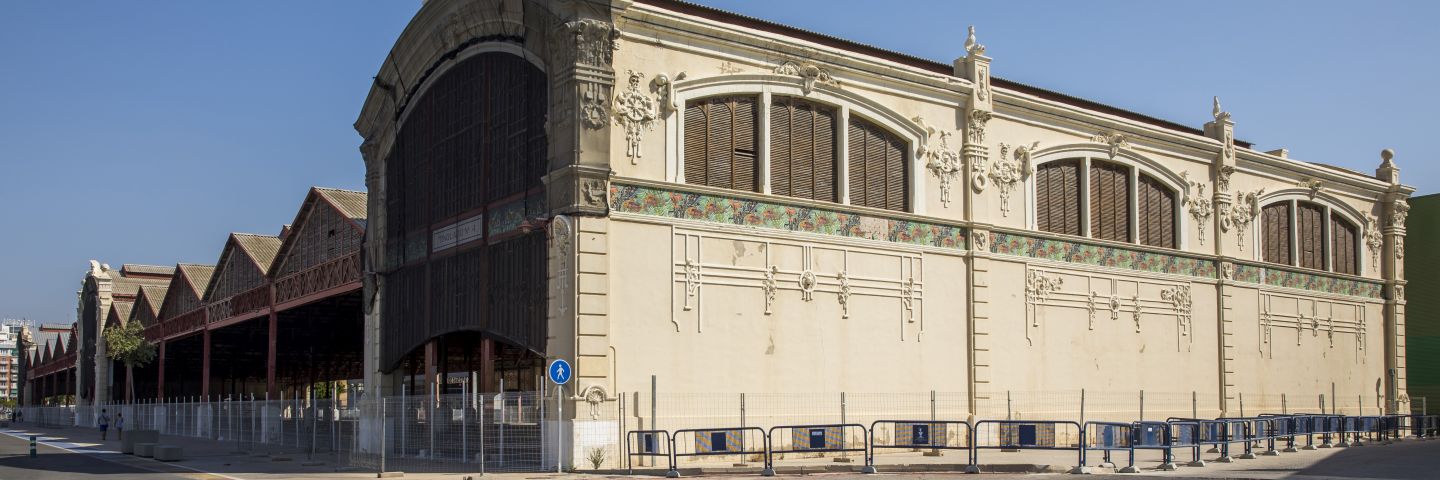
Valencia had several theaters or houses of farces since the sixteenth century, but the Teatro Principal was the first built according to the modern conception of the term. It was designed by the Italian architect Fontana in 1775, although its construction did not begin until the early nineteenth century, leaving the works paralyzed due to the French invasion, to finally be inaugurated in 1831. The building was then three stories high, and later a fourth floor was added raising the roof by cats, without disarming it. The current façade dates from 1854 and is the work of José Camaña. The interior, decorated in the Rococo style, was frescoed by Camarón.
In the nineteenth century the theater was one of the favorite shows of the Valencian society, which came to the Principal to see and be seen, especially the wealthy families, comfortably installed in their boxes. In the late nineteenth century the annual line-up included theater performances, music concerts, opera, operettas and zarzuelas, and the popular masquerade ball for carnival.
The Portal de Valldigna is a gate opened in 1400 to the Islamic wall to communicate the city with the moreria, a suburb that was established in the vicinity of the Plaza de Mossén Sorell after the Christian conquest of the city. Semicircular arch with a slight advance of the imposts that resembles the Arab horseshoe arches.
The door is a semicircular arch of ashlar with a slight advance of the imposts that resembles the Arab horseshoe arches. Above the vain there is an altarpiece of Gothic inspiration, although of modern style, in which Jaume I is represented offering the abbot of Santes Creus the land to build the Monastery of Valldigna. The extension of the house over the portal dates from 1678.
Noticeably rectangular square, one of the oldest and best delineated in the city, defined around the monumental complex consisting of the bell tower, oval chapel and doorway of the Carme church. The central garden space, with a statue of the painter Joan de Joanes, is surrounded by buildings from different periods and among them stands out the severe doorway of the Palace of Pineda. Extended in 1946 towards the side façade of the church, with trees and Mariano Benlliure fountain, it has been recently urbanized and its residential buildings are gradually being rehabilitated.
The Exhibition Bridge and the metro station are a unique work of engineering designed by the engineer and architect Santiago Calatrava, on the site of the old Exposition footbridge. Both elements constitute a harmonious set designed as a work of unitary engineering of complicated resolution and striking aesthetics.
The tangles of the Port of Valencia were built in 1914 by engineers José María Fuster and Fausto Élio, within the Plan for the Expansion and Improvement of the Port of Valencia, which aimed to relaunch its export capacity.
Work of the municipal engineer Arturo Piera. It connects the old Transits Road between Eduardo Boscà and Peris i Valero, crossing the river with 150 meters of light. It was, before its enlargement, 15 meters wide.
By its style it can be assured that it was built in the late eighteenth or early nineteenth century, when the place was still within the jurisdiction of the Order of Montesa, heiress, in the lordship of the bailio de Montcada, of the extinct Order of the Tremp. The tile factory of the temple and bell tower, slender and with a characteristic profile in the finish, with ediculum of diagonal buttresses, give this church sobriety and beauty. The floor plan has three naves, the main one covered with a barrel vault. A cornice with metal railing runs on Corinthian pilasters framing semicircular arches in communication with the aisles. The chancel has an apsidal vault and at the foot of the nave stands the choir.
The Torres de Quart are one of the two gates in the late medieval wall that Valencia conserves, as well as the Torres de los Serranos. If the Portal dels Serrans was the entrance from Aragon and Catalonia, the Quart Gate was, par excellence, the entrance from the Kingdom of Castile.
The University of Valencia is an isolated building, on a complete block, with its dependencies arranged around a large double-height cloister courtyard that, until some years ago, housed several faculties.
Its origin is prior to 1733 although, in 1830 the architect J. Martínez carried out much of the existing work. In 1889, Antoni Martorell built the current neoclassical façades; although the one facing the Plaza del Patriarca was finished in the middle of this century and, in it, a fountain that does not belong to the original design has been included. In 1931, Javier Goerlich added the upper cloister. Inside, the following stand out: the auditorium, attributed to Father Tosca, with a square floor plan and covered by a barrel vault, lowered, the neoclassical chapel, with a single nave with a choir and access through a courtyard, and the library.








